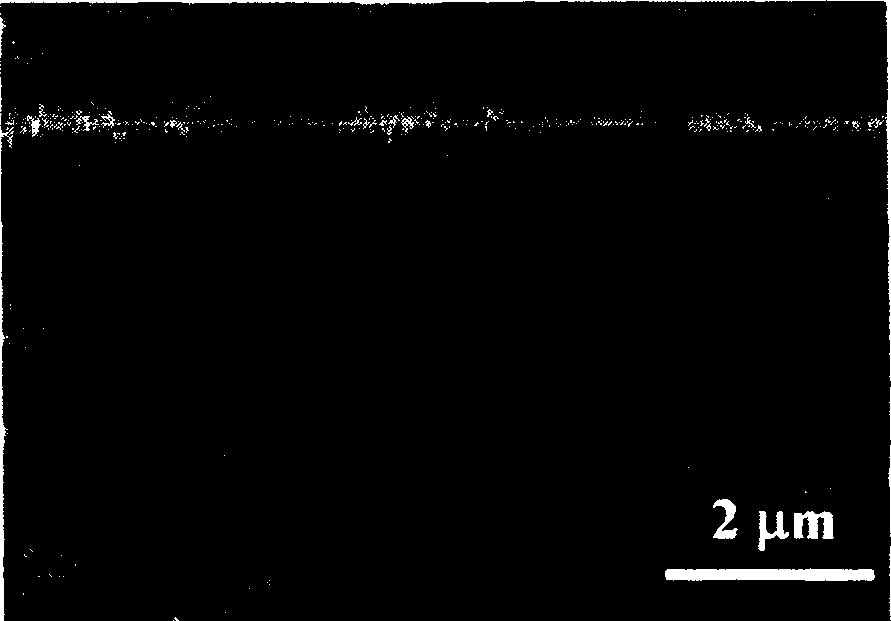Synthesizing inorganic microcapsules of storing energy through phase change by using method of solution precipitation polymerization
A technology of inorganic phase change and precipitation polymerization, which is applied to the preparation of microcapsule preparations and microspheres, and can solve the problems of no similar or similar patent reports for phase change energy storage microcapsules
- Summary
- Abstract
- Description
- Claims
- Application Information
AI Technical Summary
Problems solved by technology
Method used
Image
Examples
Embodiment 1
[0030] Disperse the inorganic phase change core material at the required phase transition temperature in an organic solvent dissolved in a surfactant at a temperature above its phase transition temperature, add a metered monomer containing an initiator, and polymerize at a certain temperature, The polymer is deposited on the surface of the small particle or droplet of the inorganic phase change material to obtain the phase change microcapsule with the required phase change temperature. The specific phase change core material formula, polymer wrapping formula, process and results are shown in the table below.
[0031]
Program
Inorganic Phase Change Materials
Concentration%
anti supercooling agent
Concentration%
Antiphase separation agent
Concentration%
1
95
3
polyethylene glycol
2
2
Sodium acetate trihydrate
96.5
...
Embodiment 2
[0036] Take 15-16 grams of calcium chloride hexahydrate, 0.1-0.2 grams of calcium hydroxide, and 0.5-07 grams of carboxymethyl cellulose for mixing. At a temperature of 40°C, disperse in 70-75 grams of butanone dissolved with 0.06 grams of OP-3 and 0.01 grams of OP-10, and then add monomers containing 0.02-0.07 grams of azobisisoheptanonitrile (styrene 10 -14 grams and 1-3 grams of divinylbenzene), control the temperature at 35°C to carry out polymerization, so that the polymer is deposited on the surface of the small particles or droplets of the inorganic phase change material, and the phase change microcapsules with a phase change temperature of 29°C are obtained. .
[0037] The above polymerization product was distilled off under reduced pressure to remove butanone. The dry powdery substance obtained is pure phase-change microcapsules. Disperse 40 grams of the above-mentioned microcapsules in 60 grams of 2D resin, then put the cotton knitted fabric into the above-mentione...
Embodiment 3
[0040] Taking the phase-change core material formulation, polymeric encapsulation formulation and microcapsule forming preparation process of Scheme 6 in Example 1, phase-change microcapsules with a phase transition temperature of 48°C were obtained.
[0041] The above polymerization product was distilled off under reduced pressure to remove butanone. The dry powdery substance obtained is pure phase-change microcapsules. Disperse 40 grams of the above-mentioned microcapsules in 1000 grams of 15% polyvinyl alcohol aqueous solution, and spin them with a wet spinning process to obtain vinylon composite fibers containing phase change materials. The fiber can be spun into a variety of temperature-adjusted fabrics with a phase transition temperature of 48°C.
PUM
 Login to View More
Login to View More Abstract
Description
Claims
Application Information
 Login to View More
Login to View More - R&D
- Intellectual Property
- Life Sciences
- Materials
- Tech Scout
- Unparalleled Data Quality
- Higher Quality Content
- 60% Fewer Hallucinations
Browse by: Latest US Patents, China's latest patents, Technical Efficacy Thesaurus, Application Domain, Technology Topic, Popular Technical Reports.
© 2025 PatSnap. All rights reserved.Legal|Privacy policy|Modern Slavery Act Transparency Statement|Sitemap|About US| Contact US: help@patsnap.com

